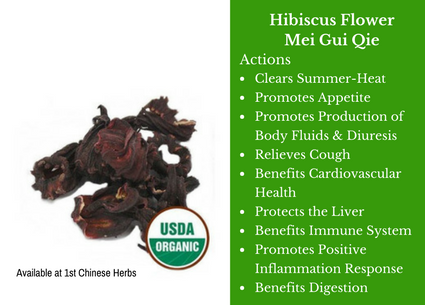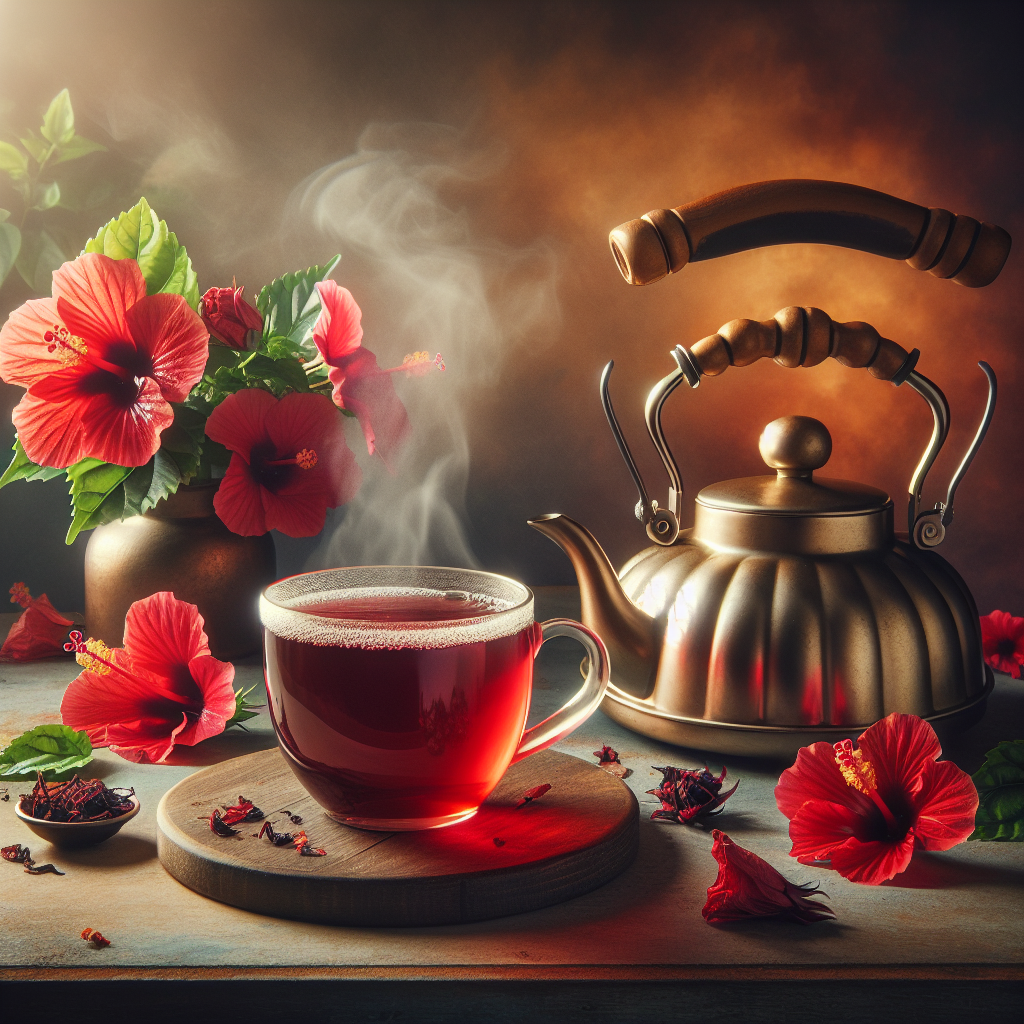Hibiscus Flower (Hibiscus sabdariffa): Tart, Bold, and a Little Bit Flirty
Sep 5th 2025
Hibiscus Flower (Hibiscus sabdariffa):
Tart, Bold, and a Little Bit Flirty
Bold. Tart. Stunningly red. The hibiscus flower doesn’t just show up — it makes an entrance. Known worldwide as the star of iced teas, traditional tonics, and even royal rituals, hibiscus has been turning heads for centuries. But this isn’t just a pretty petal with a dramatic flair. Modern research confirms what folklore always hinted at: hibiscus may support circulation, cool excess heat, and refresh the body in ways that make it the diva of the herbal kingdom. Whether you’re sipping it in a chilled glass on a summer day or brewing it hot for wellness, hibiscus always brings flavor, history, and a touch of sass to the cup.
Quick Summary
| Category | Details |
|---|---|
| TCM Category | Clear Heat, Generate Fluids |
| Taste & Nature | Sour, Slightly Sweet / Cooling |
| Meridians | Liver, Heart |
| Forms | Dried petals, Tea, Syrup, Culinary use |
| Best Paired With | Ginger, Cinnamon, Citrus peel, Mint |
| Folklore Role | Symbol of fleeting beauty, love, and passion |
Meet the diva of the herb world: the hibiscus flower. She’s vibrant, tart, and impossible to ignore. From cooling pharaohs in ancient Egypt to spicing up agua de jamaica in Mexico, hibiscus has danced through history with style. But beyond her dramatic red dress, hibiscus supports wellness in ways that modern science is now confirming.
What Hibiscus Does (Health Benefits)
Hibiscus is more than an eye-catching flower. Research suggests it may:
-
Support healthy blood pressure already in the normal range
-
Provide antioxidants to fight oxidative stress
-
Promote gentle fluid balance
-
Offer vitamin C for immune support

DSHEA Note: This information is for educational purposes only and is not intended to diagnose, treat, cure, or prevent disease.)
Why It Works (Science & TCM Perspective)
-
Scientific View: Hibiscus is rich in anthocyanins, the same plant pigments found in blueberries and cranberries. These compounds may help relax blood vessels and support circulation.
-
TCM View: Traditionally, hibiscus is considered sour and cooling, entering the Liver and Heart meridians. It clears heat, quenches thirst, and harmonizes fluids.
Think of hibiscus as jazz music for your arteries and a refresh button for the body’s heat balance.
 How to Use Hibiscus
How to Use Hibiscus
-
Tea: Steep 1–2 teaspoons of dried petals in hot water for 5–7 minutes. Enjoy hot or iced.
-
Summer Cooler: Brew a strong infusion, chill, and sweeten lightly for a refreshing agua de jamaica.
-
Pairings: Hibiscus blends beautifully with ginger (warming), cinnamon (balancing), citrus peel (zesty), and mint (cooling).
-
Culinary Uses: Adds tangy flavor to jams, sauces, and even tacos.
When to Use
-
On hot summer days for cooling hydration
-
Before or after salty meals for gentle fluid balance
-
As an afternoon refresher without caffeine
-
For fancy entertaining — iced hibiscus tea in a wine glass screams “royalty”
Folklore & History
-
Egypt: Beloved by pharaohs for cooling in desert heat.
-
Mexico & Central America: Agua de jamaica is a cultural staple, tart and refreshing.
-
Ayurveda: Hibiscus used for hair, circulation, and heart health.
-
Folklore: Associated with passion, fleeting beauty, and sometimes love potions.
Common Questions
Is hibiscus safe for everyone?
Generally, yes, but those with low blood pressure or on certain medications should consult their healthcare provider.
Does hibiscus have caffeine?
No, it’s naturally caffeine-free.
What does hibiscus taste like?
Tart, tangy, and a bit cranberry-like.
Shop This Herb
Buy Hibiscus Flower Tea & Bulk Herbs at 1st Chinese Herbs
-
Lab-tested for quality
-
GMP-certified
-
Available in cut, sifted, and powder forms
Related Links

